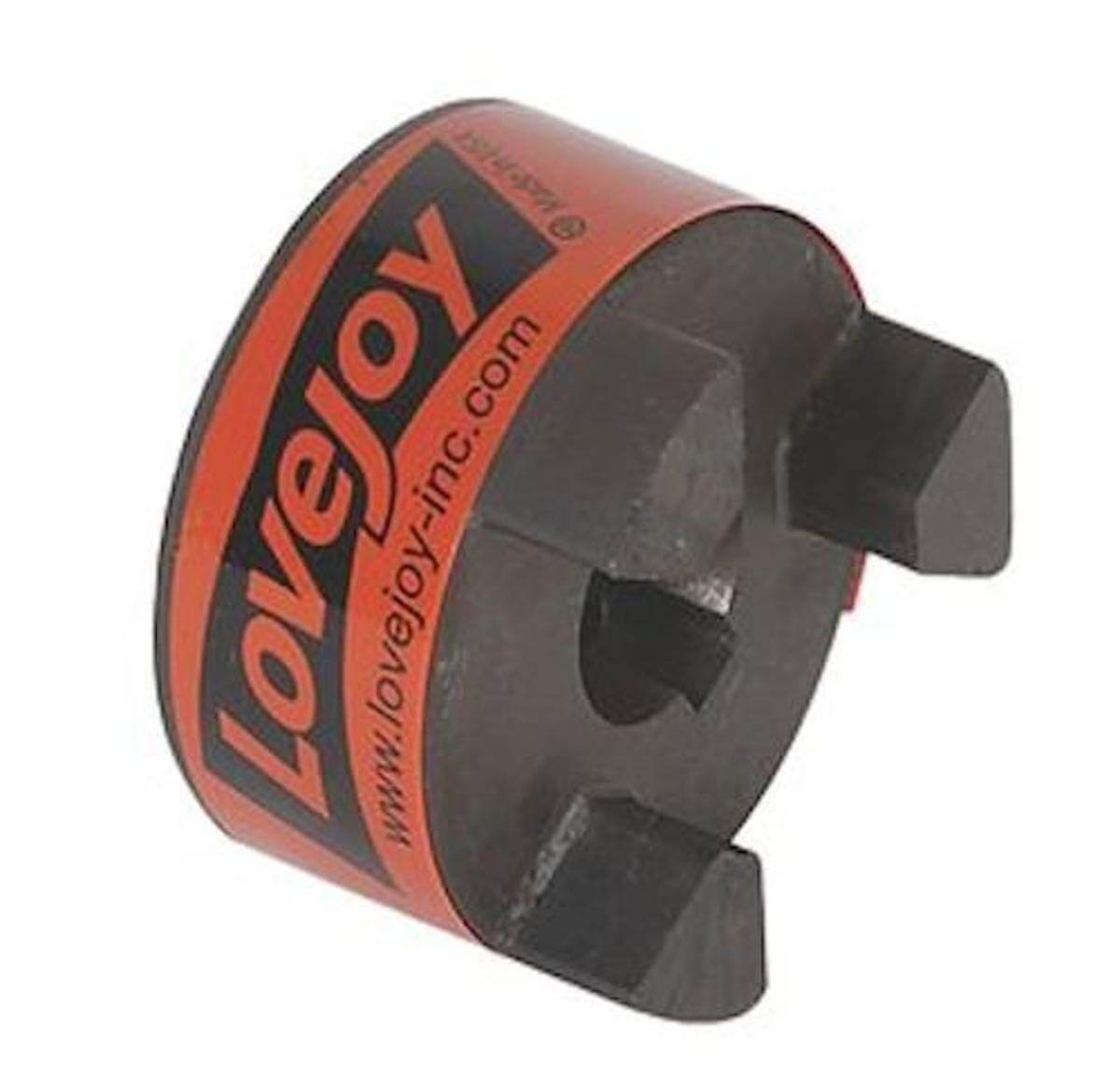Features:
- Lovejoy L070 couplings are assembled by combining two L070 jaw hubs with a L070 spider to create L Type couplings.
- This Lovejoy 68514441319 keyway hub features a fail-safe design for secure connection with shafts.
- It is made of sintered iron that can handle nominal torque and speeds up to 4.9 Nm and 14000 RPM, respectively.
- The compatible spider attached with it features an open / solid centre with bronze, Hytrel, SOX (NBR) rubber or urethane construction to accommodate angular and parallel shaft misalignments.
- This straight-jaw coupling hub comes with a keyway to prevent slips, vibrations & backlash errors.
Frequently Asked Questions:
Q. What is the difference between keyed and keyless jaw coupling hubs?
A. Jaw coupling hubs feature a cutout slot, known as keyways that fit in the shaft keys. These keys promote improved torque & prevents slipping, as well as reduce losses caused by vibrations & backlash (degree of free movement between two rotating, mating parts). However, some applications do not require keys, as keyless jaw coupling hubs use only set screws to transfer torque. Keyless hubs are ideal for situations which remain unaffected even if the shafts slip.
Q. What frequent mistakes are made when selecting a jaw coupling hub?
A.
- Failing to check the maximum bore capacity: Users should always check the shaft size of the driven equipment before choosing the jaw coupling.
- Using the same-sized couplings everywhere: It may seem like a good idea to prevent downtime. But an oversized or undersized jaw coupling may cause motor malfunctioning.
- Ignoring heat and chemical compatibility: Since the jaw couplings require buying both hubs and spiders, one should ensure that they're both compatible with each other.
- Overlooking space restrictions: Make sure that the selected couplings can fit the provided space. High torque applications usually require either a large diameter coupling or a coupling with multiple configurations & high torque density.
Q. What precautions should be taken after installating the coupling?
A.
- Check for set screw tightness & alignment before testing to prevent potential misalignments.
- When the coupling is ready to start up, remove any material or tool away from the shaft and coupler.
Q. How to install a jaw coupling hub?
A.
- Use a spider according to the selected hub (preferably from the same corresponding series) having the same specifications & parameters.
- Ensure that each component is free from contaminants, defects or cracks and match the shaft diameter to the bore size of the hubs.
- Before installation, ensure that the machinery is disconnected from all power sources. Do not install it on unstable or moving equipment.
- The hubs with key slots should be fitted with the keys and slid into shafts to prevent slipping during shaft rotation.
- Insert the spider into the hub (make sure that the spider opening is large enough to fit both the shaft & the optional key). Then, the second hub is brought near the first hub and aligned while minding the gap between the hub faces.
 Change Country
Change Country
